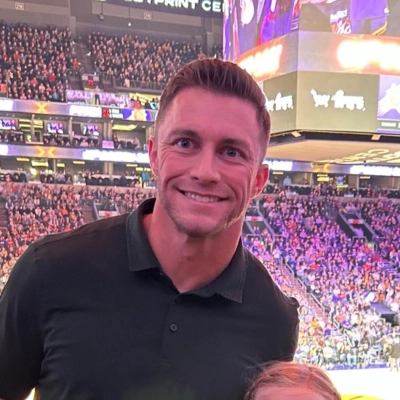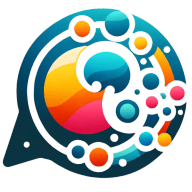16 Ways Technology Streamlines Customer Interactions
In today's fast-paced digital landscape, businesses are constantly seeking ways to enhance customer interactions through technology. This comprehensive guide explores various innovative approaches that are revolutionizing how companies engage with their clients. Drawing on insights from industry experts, the article delves into cutting-edge solutions ranging from AI-driven support to automated lead nurturing, all designed to streamline processes and boost customer satisfaction.
- Smart Intake Flow Enhances Customer Experience
- Automated Lead Nurturing Boosts Efficiency
- Streamlined Intake System Saves Lives
- Smart Forms Improve Pest Control Efficiency
- Integrated Job Management Simplifies Client Interactions
- Automated Investor Matchmaking Accelerates Startup Connections
- AI-Driven Support Transforms Customer Journey
- Targeted Email Sequences Boost Engagement
- Service Report System Enhances Communication
- Route Optimization Improves Customer Satisfaction
- Text Reminders Reduce Appointment No-Shows
- Automated Lead Scoring Increases Conversion Rates
- CRM Integration Personalizes Customer Interactions
- Policyholder Portal Empowers Insurance Customers
- AI Chatbots Expedite Customer Engagement
- Automated Updates Keep Customers Informed
Smart Intake Flow Enhances Customer Experience
We lean hard into tech that removes friction and makes the experience feel human without needing a human at every touchpoint. One of the best moves we made was building a smart intake flow for new project inquiries using Typeform + Zapier + Airtable + Slack.
Here's how it works:
A lead hits our site and fills out a custom Typeform. Based on their answers (budget, timeline, stage, etc.), Zapier routes their info into Airtable, scores the lead, and instantly posts a summary into Slack with a call-to-action button—"Approve, Snooze, or Pass." Once approved, they get an automatic Calendly invite for a kickoff call, plus a Notion doc pre-filled with their own info to guide the conversation.
The result? From form submission to scheduled call with context—under 10 minutes, all automated. No back-and-forth emails, no data entry, no wasted time. And because it's personalized based on what they shared, it feels curated—not robotic.
It's not about removing people from the process. It's about letting software handle the boring stuff so we can focus on showing up sharp when it counts.
Automated Lead Nurturing Boosts Efficiency
One of the best decisions I made was setting up automated lead nurturing using HighLevel. When someone books a discovery call on our website, they receive a personalized confirmation, a reminder email the day before, and a brief SMS two hours prior to the call.
All of this runs without me lifting a finger. What used to take back-and-forth emails and manual reminders is now smooth and reliable. It not only saves time but also significantly increases our show-up rate. Clients feel taken care of, and I can focus on strategy instead of administrative tasks.

Streamlined Intake System Saves Lives
In addiction treatment, the moment someone reaches out is everything. They're either at rock bottom or getting real close. If you fumble the interaction — delay it, miss it, or overcomplicate it — you lose trust. And in this field, losing trust means losing lives.
At Ridgeline Recovery, we don't let technology get in the way of humanity. We use it to clear the path. One of the biggest game changers for us has been integrating an automated intake pre-screening system on our site. It's not some clunky form. It's direct, quick, and built for someone who might be shaking while they're filling it out. We ask only what's necessary up front — just enough to get our admissions team moving fast.
Here's what happens: once that form's submitted, it pings our internal system, alerts our admissions team in real time, and creates a custom file with preliminary notes so our team doesn't waste time asking repeat questions when they follow up. We're not having someone pour their heart out twice. That kind of tech cuts the noise and gets us on the phone faster — with clarity.
But here's the catch — the follow-up is never robotic. A human always calls. A trained, compassionate one. Someone who gets it. Tech clears the brush, but people make the connection.
That's how we use technology: not to replace the heart of the work, but to protect it. So when someone finally decides to reach out, we're not fumbling through red tape. We're ready to respond like their life depends on it — because it might.
Smart Forms Improve Pest Control Efficiency
One way we've made customer interactions more efficient is by integrating a smart form system into our website. A few years ago, we were receiving too many vague contact form submissions—people saying things like "I have bugs" with no detail. This forced a lot of unnecessary back-and-forth communication. So we built in logic that adjusts questions based on answers. If you say you're seeing ants, it asks if they're in the kitchen or bathroom. This gives our technicians much more context before they even step foot on the property.
I remember one case in McKinney where a customer thought they had termites because they were seeing small black bugs in the bathroom. Thanks to the detailed form, we knew in advance they were actually describing ant swarmers. Our technician brought the right materials, treated the problem on the first visit, and we didn't waste a trip. This kind of small operational improvement has made a big impact—less frustration for customers and better routing and planning for us.

Integrated Job Management Simplifies Client Interactions
I use technology every day to simplify how I interact with customers and make the whole process more efficient. One specific example is the way I've integrated a job management system that lets me schedule, quote, invoice, and communicate with clients all in one place. When a customer reaches out through the website or by phone, I can log their details straight into the system, generate a professional quote on the spot, and send it instantly. Once the job is booked, automated reminders keep both me and the client informed, reducing no-shows or miscommunication. After the work is completed, I can invoice them directly from the system, and they can pay online, which saves everyone time. This approach has completely removed the old back-and-forth and paper trail that used to slow things down.
The reason this works so well is because of the years I've spent understanding not only the practical side of gardening and landscaping but also the common pain points clients experience. With over 700 projects under my belt and my background in both horticulture and customer service, I knew where the gaps were. So when I was choosing a system, I made sure it could handle things the way I wanted my own service experience to feel: quick, clear, and professional. That attention to detail and client experience is what helped me win a customer service award and why I've been able to grow Ozzie Mowing and Gardening into a reliable and trusted business.
Automated Investor Matchmaking Accelerates Startup Connections
We use technology to remove friction, not to replace the human touch. One specific example is how we automated our investor matchmaking process. Before, we spent hours manually sorting through investor databases, matching them with startups based on industry, ticket size, and geography. It worked, but it wasn't scalable. So, one of our team members built an internal tool that uses simple filtering logic and data tagging to rapidly shortlist relevant investors from our network. Now, what used to take a day takes under an hour. But we didn't stop there—we integrated Calendly links into email outreach, synced with founders' availability, so scheduling follow-ups became instant and painless.
I remember one founder told me, "This felt like a concierge experience, not software," and that stuck with me. That's the goal: let technology handle the grunt work so we can focus on actual conversations. At Spectup, efficiency is about creating more space for connection, not less of it.

AI-Driven Support Transforms Customer Journey
Throughout my career leading global e-commerce and digital marketing initiatives, I have seen that the most meaningful improvements in customer interactions come from applying technology to real operational bottlenecks. You cannot simply digitize existing processes and expect a better outcome. The real gains come from rethinking how customers want to interact, then using technology to make those interactions seamless and resource-efficient.
A practical example comes from my consulting work with a multinational retailer aiming to reduce friction in customer support across digital channels. Previously, their customers faced long wait times and inconsistent answers, whether they contacted the company through the website, app, or call center. We approached the challenge not by layering more tools, but by integrating a unified customer data platform with AI-driven automation.
We started by mapping the full customer journey and identifying where customers encountered delays or redundant steps. Then, we implemented a real-time messaging system on both the website and app, powered by AI chatbots trained on actual support transcripts. These chatbots handled the majority of routine inquiries instantly, such as order status or returns policies, and seamlessly transferred complex cases to live agents equipped with the customer's full interaction history.
The result was not just faster response times, but also increased customer satisfaction and reduced operational costs. What made the difference was the integration: the same system fed insights back to marketing and merchandising teams, allowing them to spot recurring issues and proactively adjust policies or campaign messaging.
At ECDMA, I often see companies try to automate without first clarifying what the customer actually values. The key is to use technology as an enabler for clarity and speed, not as a substitute for understanding the customer journey. When you align your technology investments with operational goals and customer expectations, you achieve efficiency that is both measurable and scalable. This approach consistently delivers stronger loyalty and better business results.
Targeted Email Sequences Boost Engagement
We use technology to simplify and personalize customer interactions without compromising on efficiency. One tool that has been instrumental is our CRM integrated with a marketing automation platform. It helps us segment audiences based on their industry, past interactions, and stage in the buying journey.
For example, when we launched our mining simulator updates, we created tailored email sequences for existing clients, new leads, and media contacts. Each group received targeted content such as demo videos, case studies, or tech sheets, delivered automatically at the right time.
This approach not only improved engagement but also reduced manual follow-ups and ensured our communication stayed relevant. It has helped us convert interest into action faster and maintain stronger relationships with clients across different time zones.

Service Report System Enhances Communication
We utilize technology in a manner that maintains personal touch and efficiency. One tool that has made a significant impact is our service report system. After each visit, we send customers a detailed email outlining precisely what was done, what we discovered, and any recommendations we have. It's a clear, immediate way to communicate without waiting for a phone call—and our customers appreciate it because they know exactly what's happening with their service.
I recall an instance in Omaha when a customer thought we had missed an area in their garage. She sent us a note, expressing some frustration. Thanks to our system, I was able to quickly retrieve her service report, which included photos taken by our technician. We had indeed treated the exact spot in question, and the photos helped clarify the situation immediately. She appreciated the transparency, and we avoided an unnecessary second visit. That single feature saved time for both parties and preserved her trust.

Route Optimization Improves Customer Satisfaction
One of the most effective ways I've streamlined customer interactions is by using route optimization software combined with real-time technician updates. A few summers ago in Tucson, we had a surge in scorpion calls after a monsoon, and our schedule got packed fast. By using our routing tools and two-way field service communication, we kept customers in the loop with ETAs and rescheduled on the fly without anyone falling through the cracks.
I remember one homeowner in Chandler who was on edge about scorpions inside her child's bedroom. Normally, that could've taken days to reach with the backlog, but I was able to shift a nearby technician and notify her instantly through the app. She texted back within a minute, thanking us for the quick turnaround. That's the kind of interaction that turns a worried customer into a loyal one.

Text Reminders Reduce Appointment No-Shows
One of the best decisions I made was integrating automated text reminders into our scheduling system. Years ago, I remember visiting a client out in South Austin — I'd driven across town, only to find out they'd forgotten the appointment entirely. That kind of thing happened more often than you'd think. Once we rolled out the reminder system, we saw a noticeable drop in no-shows and late cancellations.
From my perspective, it's not just about efficiency — it shows respect for the customer's time and ours. Folks appreciate the heads-up, especially busy parents or business owners juggling a lot. It's simple technology, but it makes a huge difference in keeping things running smoothly and keeping our team on schedule.

Automated Lead Scoring Increases Conversion Rates
Here's my go-to game-changer: we use automated lead scoring combined with personalized email sequences that trigger based on specific user behaviors on our clients' websites. When someone downloads a guide or spends more than 3 minutes on a service page, our system automatically tags them and sends targeted follow-ups that speak directly to their interests. Our agency helps businesses increase online visibility, drive organic growth, and dominate search engine rankings through strategic audits, content, link building, and AI-assisted writing—and this tech stack has boosted our clients' conversion rates by an average of 40%. I reckon the magic happens when you combine smart automation with genuine value. From day one, we've gone above and beyond with deep SEO expertise and a level of care that's rare in this space, and this approach helps you rank higher, get found faster, and turn search into sustainable growth that actually converts.
CRM Integration Personalizes Customer Interactions
We use technology to make working with customers easier by using a customer relationship management (CRM) system that keeps all communication and service information in one place. For example, we connect the CRM with our email, chat, and phone systems. When a customer contacts us, our team can quickly see their entire history, including past purchases, support tickets, and preferences. This helps us respond faster and offer more personalized help without asking the customer to repeat details. We also set up automatic follow-ups and reminders in the CRM to make sure we don't miss any questions or requests. The system creates reports that help us find common problems and improve how we work. Because of this, we respond more quickly and solve most issues on the first contact. Using technology this way makes customer interactions smoother, more consistent, and more effective, which strengthens our relationships and improves the overall experience for our customers.

Policyholder Portal Empowers Insurance Customers
Modotech's ISi insurance policy administration system (PAS) streamlines customer interactions through a separate policyholder portal. This portal allows customers to print their own insurance cards, get answers to FAQs, view their policies, and make payments. The best feature is that the information displayed to policyholders is separate from the main database, ensuring the security of sensitive customer information.

AI Chatbots Expedite Customer Engagement
At Talmatic, we use technology to boost automation of customer engagement through the use of AI-powered chatbots. These chatbots address routine questions and pre-qualify leads before passing them on to human representatives.
For example, we implemented a customized chatbot on our platform that captures project requirements and availability from potential customers. This allows our team to reply faster with custom solutions. As a result, we have significantly reduced response time and increased customer satisfaction without sacrificing personalization.

Automated Updates Keep Customers Informed
We use technology to keep things running smoothly and make sure our customers are always in the loop. From the moment you place an order, you'll get automated confirmation and tracking updates, so you know exactly what's happening and when your delivery is due. Our customer service team is on hand seven days a week, and we use a shared system that helps us manage emails quickly and respond faster. Everything is set up to reduce delays and give our customers clear, reliable updates--without having to chase for information.






